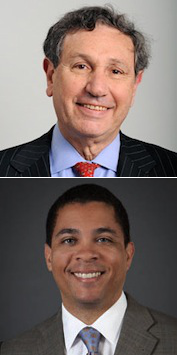Reducing the amount of parking in new development promises to make housing more affordable and curb traffic congestion, but it hasn't gained much traction in Bill de Blasio's first months at City Hall, despite the mayor's ambitious promises to ease the housing crunch. Today, two top city officials explained why, unlike their counterparts in more car-dependent cities, New York's leaders are suggesting only the meekest changes to off-street parking policy.

The mayor's housing plan recommends lower parking requirements for affordable housing near transit, senior housing, and commercial development that also includes residential units. At a Municipal Art Society forum this morning, Planning Director Carl Weisbrod highlighted these reforms as one of the ways the mayor's housing plan aims to reduce the cost of construction -- but only in places where car ownership is very low.
"Other areas have to be examined more carefully," Weisbrod said after the event. "What we're looking at is how we can appropriately reduce the cost of construction while not having a significant -- or any -- impact on the quality of life in neighborhoods."
This outlook matches the philosophy of DCP's nascent parking plan for "inner ring" neighborhoods, which lists "maintaining an adequate supply of residential parking for people who choose to own a vehicle" among its "quality of life" goals. The result: DCP tries to tailor the city's parking regulations to local car ownership rates, rather than using parking policy as a tool to make housing more affordable and reduce traffic.
DCP isn't the only place where the tail wags the parking policy dog. If anything, things are worse at the Economic Development Corporation.
EDC President Kyle Kimball said he follows Streetsblog and that while he supports our policy angle, he takes issue with how we've reported about EDC projects. "[EDC] never had a policy of incentivizing parking as an economic development strategy," he said. "Actually, at the end of the day it ends up costing the city. Developers don't want to build parking, either."
Yet EDC's projects often include massive amounts of parking. At Yankee Stadium, EDC arranged public financing for 9,000 mostly-empty parking spaces whose operator defaulted on tax-exempt bonds. "The Bronx parking situation was one where they put in the right amount of parking at the time, given what they thought and what the Yankees were willing to pay for," Kimball said of the subsidized project.
To hear Kimball tell it, the parking was done in by an over-performing train station. "There has turned out to be more commuting from that Metro-North station than the EIS anticipated," he said. "So do I think it was a mistake to build the parking? No. Do I think the EIS could have been done differently? Yes."
Kimball said the city's economic development arm must also bend to local interests crying out for cheap, plentiful parking.
At Flushing Commons, a city-owned parking lot near the subway, LIRR, and a bus hub, EDC required the developer to replace all the parking on site and build a total 1,600 spaces, more than double what was required by zoning.
Kimball laid the blame for the Flushing Commons project on local elected officials and the community board, which demanded the extra spaces. John Liu, a City Council member at the time, lobbied hard for more parking at subsidized rates. "We were asked by the community to replace the parking, so we did," Kimball said. "That was a requirement of getting it through ULURP."
"You have to, at the end of the day, balance public policy with getting a project done," Kimball said.





